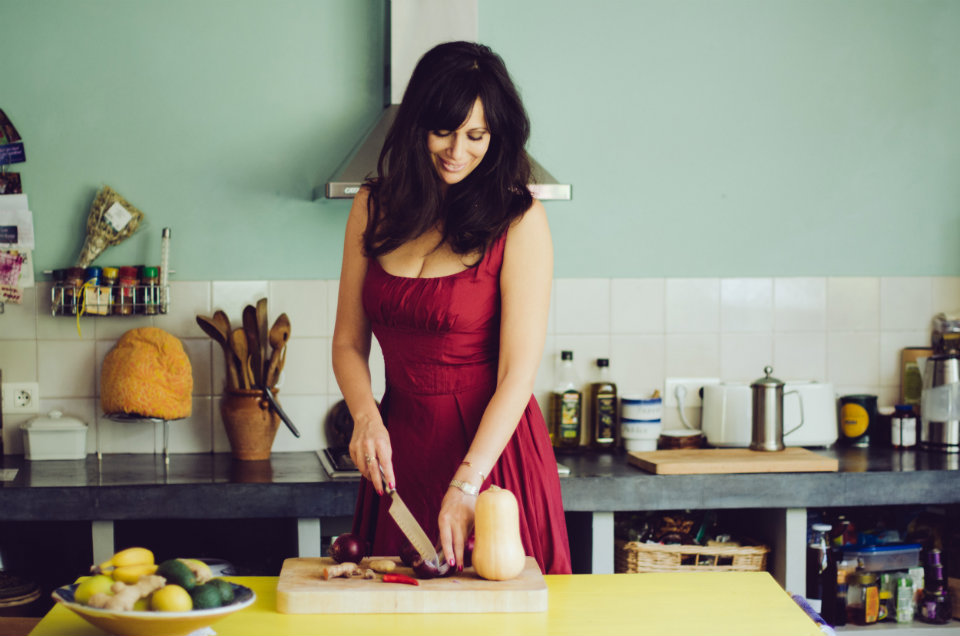The Low Histamine Diet
A typical histamine reaction is hard to differentiate from the standard allergic response.
The very human natural instinct to run out and eat healthy food when we become ill is a really positive one.
Sadly though, what most of us aren’t aware of is that there isn’t a one size fits all approach to it.
Take my story for instance: A myriad of puzzling symptoms including migraines, dizziness, nausea, IBS, chronic fatigue, hives, chemical sensitivity and more, eventually got the better of me, making it impossible to continue working as a television news producer in conflict zones.
It was a blow of epic proportions, given that I had literally worked myself into the ground for a decade to get where I was.
Finally accepting the fact that diet played a role in my alarmingly declining health, I became a vegan and ran out to stuff myself with the “healing” foods everyone told me I needed: avocado, strawberries, pineapple, nuts, tofu, fermented foods, kombucha, nutritional yeast, to name a few.
What I didn’t know was that my -as yet undiagnosed- condition, histamine intolerance/mast cell activation (depending on which country you live in), is worsened by these very foods.
For some people, especially those with too little of the histamine-metabolizing enzyme, this causes chronic inflammation.
Now, a little science.
What is histamine? You’ll have heard of histamine, as in, “I’m taking an anti-histamine for this nasty reaction/hay fever etc.” Histamine is found in foods, but also in our body, stored in mast cells, which are an integral part of the immune system. Histamine’s job in the body is varied: it acts as a neurotransmitter, affects the rate at which we burn calories, and modulates our appetite.
Histamine also controls our circadian rhythm and an excess of it was recently found to cause narcolepsy, which may explain its link with chronic fatigue.
One of histamine’s most important roles is to cause inflammation at the site of a wound, or bacterial/viral infection, in order to begin the healing process.
Things begin to go awry when mast cells (where histamine is safely housed most of the time) break open too easily or unpredictably, unloading their inflammatory cargo in excess.
For some people, especially those with too little of the histamine-metabolizing enzyme diamine oxidase (DAO), this causes chronic inflammation.
A typical histamine reaction is hard to differentiate from the standard allergic response: wheezing, itchy eyes, inflamed stomach, hives and itching are common.
As a recent article in The Times newspaper (UK) that I was quoted in pointed out: “About 1 per cent of the UK population — and more women than men — is thought to suffer from HIT (histamine intolerance), with most affected during middle age.”
A typical histamine reaction is hard to differentiate from the standard allergic response: wheezing, itchy eyes, inflamed stomach, hives and itching are common. Less so is anaphylactic shock, which I experienced, in spades, for many years.
Many of us go through years of standard allergy (IgE) and scratch testing, all of which usually come up mostly negative.
It’s at that point, once we’ve exhausted the allergy tests, that we’re handed out other diagnoses that are a little more far fetched, or downright wrong, like being told it’s all in our head.
To which leading immunologist and pioneering histamine researcher Dr. Janice Joneja responds “Of course it’s all in your head – histamine is a neurotransmitter!”
Joking aside, histamine intolerance, mast cell activation and the closely related mastocytosis, are very rarely diagnosed. Mostly because (in my opinion) there are far too few doctors out there who know anything about them. Histamine intolerance is currently diagnosed with a histamine blood test, diamine oxidase or a four-six week histamine elimination diet.
Luckily, by the time of my diagnosis, I was too healthy to indulge in the really nasty stuff that causes the most damage, such as: Bacon, canned meats, smoked meats, pizza, salted and fermented fish, cheeses, yeast, coffee, black tea, Marmite, ketchup, pickled foods, cream, milk, sour cream, most nuts, avocadoes, strawberries, raspberries, kiwi, pineapple, apricots, nectarines, peaches, bananas, aubergines, fava beans, potato, chocolate, honey, champagne, red wine, most alcohols, all food dyes, artificial flavors and sweeteners.
Leftovers are also off the menu because bacteria cause histamine release in the body.
That’s just a really brief sample of a very long list (see the end of this article for more). You can perhaps appreciate why I had a complete meltdown when I first saw it.
Being a really healthy eater by this point, I found it really difficult to accept that my favorite foods had to go.
I mean walnuts? Seriously? “But they’re SO good for me” I kept insisting. And yet in the end I really couldn’t argue with the fact that I came out in hives and trembled every time I ate them. So, what’s a newly diagnosed histamine intolerant gal to do?
I decided to apply my decade of CNN/BBC production skills to researching these conditions.
Apparently, adhere to a low histamine diet that doesn’t include any of the aforementioned foods, take pills to boost the histamine-lowering DAO (diamine oxidase) enzyme and not much else.
I did my very best to survive like this for over two years.
In my case, and now I know in that of many of the 60,000+ people who read my blog and write to me monthly, cutting nutrients out of the diet, especially if we weren’t such healthy eaters to begin with, often results in temporary relief, followed by a worsening of symptoms.
The reasons for this as yet are unclear.
My top guesses are that cutting all histamine out of the diet means the body needs to produce more for all those vital functions and that we need many of the vital nutrients not included on the low histamine diet to actually lower histamine.
In my case, on the traditional low histamine diet I became more and more sensitive to an increasing number of foods.
So I decided to apply my decade of CNN/BBC production skills to researching these conditions.
I soon understood that inflammation was at the heart of the matter, and cutting beneficial foods from the diet was hurting rather than helping.
By this time I had a considerable number of readers willing to try my approach, which in a nutshell, is simply to add as many high nutrient antihistamine and anti-inflammatory foods to the diet as possible, rather than focus on cutting things out.
I now follow what I’ve dubbed a “histamine-balanced” diet whereby I make sure to include all beneficial high nutrient higher histamine foods (avocado, fava beans, strawberries etc), counterbalanced by histamine-lowering quercetin-rich foods like green herbs, apples, cucumbers, arugula and much more.
All I needed to do was accept that food wasn’t my enemy, but rather a partner in the healing process.
It took me some time to understand that there was a whole world of beneficial foods out there; all I needed to do was accept that food wasn’t my enemy, but rather a partner in the healing process. It was an uphill battle to reacquaint my body with all of the healthy foods I had cut from my diet.
The problem with having a hyper active immune system (like those of us with histamine disorders) is that the body tends to totally freak out when you expose it to something new.
That something new may just be something you cut out from your diet a few years ago, beauty products, medication or a new exercise.
Making sure to feed it antihistamine and anti-inflammatory foods only, rather than even just a standard low histamine diet (which is what I used to do), in combination with a consistent meditation/stress relief practice and inflammation-fighting yoga, has allowed me to eat what I consider to be a normal diet and live a very happy life. I now enjoy all kinds of high nutrient high histamine foods, but I have no desire whatsoever to add back pizza, pasta, smoked meats, packaged foods, or any of the incredibly unhealthy foods that formed the majority of my diet in years past.
Always one to look on the bright side, I’m thankful to my illness. It has taught me that being healthy isn’t a birthright.
In order to enjoy good health I’ve had to approach my condition with the intention of treating myself the best I ever have, becoming the healthiest I have ever been and taking time to cultivate the mindset necessary to maintain this new lifestyle.









